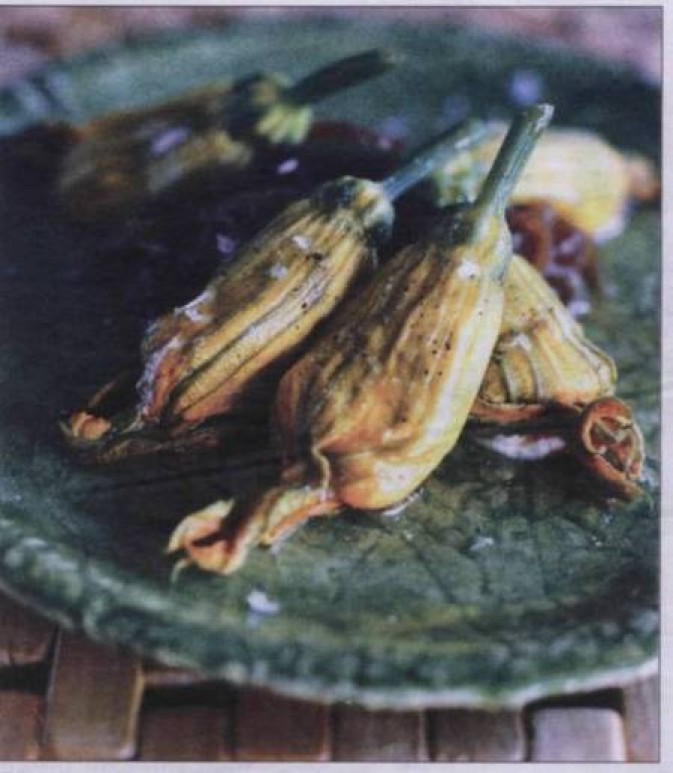Zucchini. A vegie to grill, fry, or roast.
THE SUN-HERALD November 6, 2005 , p. 78.
Zucchini is ideal for small gardens and its versatile, delicious fruit and edible flowers are a gourmet’s delight, writes ABC Gardening Australia’s Josh Byrne.
ZUCCHINI (Cucurbitapepo) is a great vegetable for the home garden. It’s quick and easy to grow and extremely versatile to use in the kitchen. Closely related to pumpkins and melons, zucchini is more compact and is well suited to small gardens. Zucchini is a type of summer squash. When picked young it is referred to as a courgette and when left to balloon out it is called a marrow
Getting started
Zucchini can be planted all year in the tropics, in all but winter in the subtropics and in spring and summer in cool and temperate regions. It is best grown from seed because the seedlings resent root disturbance. If you do buy seedlings, take care not to injure the fragile roots when planting.
Sow seeds 60 centimetres apart in a sunny sheltered spot and allow 1.5 metres between rows for easy access. Three or four plants provide enough zucchini for a family of four. Plant every four weeks to ensure a steady supply through summer and autumn.
Varieties of zucchini vary according to plant size, colour and shape of the fruit. They are either cylindrical or round and range from yellow through to green and black. Good varieties to try include Blackjack with prolific, very dark green fruit on a compact bush, the dark green Ambassador, excellent for small gardens, and Golden with bright yellow fruit.
How to plant
Zucchini does best in a neutral, well-drained soil with added organic matter. Compost or aged
cow manure is perfect. If you have heavy soil, plant into mounds to aid drainage. Sow two to three seeds per mound and thin out the weakest plants to prevent crowding. Compact varieties can also be grown in large pots.
Caring for zucchini
Regular watering is essential as plants soon wilt in dry conditions. They normally recover but it does make them vulnerable to blossom end rot.
Drip irrigation is best as overhead watering increases the chance of powdery mildew Regulady apply organic liquid fertiliserto ensure strong growth and a good yield.
Plants start to crop four to five weeks after sowing and continue to produce fruit for several months if healthy. Harvest fruit when they are 10 to 20 centimetres long, leaving one centimetre of stem attached.
In the kitchen
Zucchini is a fabulously versatile vegetable and tastes fantastic when steamed, char-grilled, stir-fried or roasted. Growing your own zucchini means you’ll have access to its wonderful flowers, which are rarely available in shops. Even if you do manage to procure them, they’re generally quite expensive, which is another bonus to growing them yourself.
Both male and female flowers are edible, although the female flowers are often left to develop into fruit. The male flowers are borne on thin stems compared with the short swollen base of the female flowers. Harvest the flowers during the middle of the day when they have fully opened.
One of the most popular ways to use zucchini flowers in cooking is to stuff them with ricotta and lightly fry them.
They’re very delicate so be very gentle when handling them. To prepare them, first remove the stamen and pistil from inside each flower and lightly brush the flowers to remove any soil.
Season 300 grams of ricotta cheese with sea salt and ground black pepper.
Place a couple of teaspoons of the mixture into each flower and gently twist the petal tips to enclose the filling.
Beat an egg lightly and dip each flower into it then dip them into flour, just enough to coat the flower lightly.
Fry lightly for a few minutes in olive oil in a medium frying pan.
Turn them at the first sign of browning and don’t allow the flour to burn.
Serve warm with a fresh tomato sauce.
